Stunning Starfish Image Wins Life Science Photo of the Year 2022
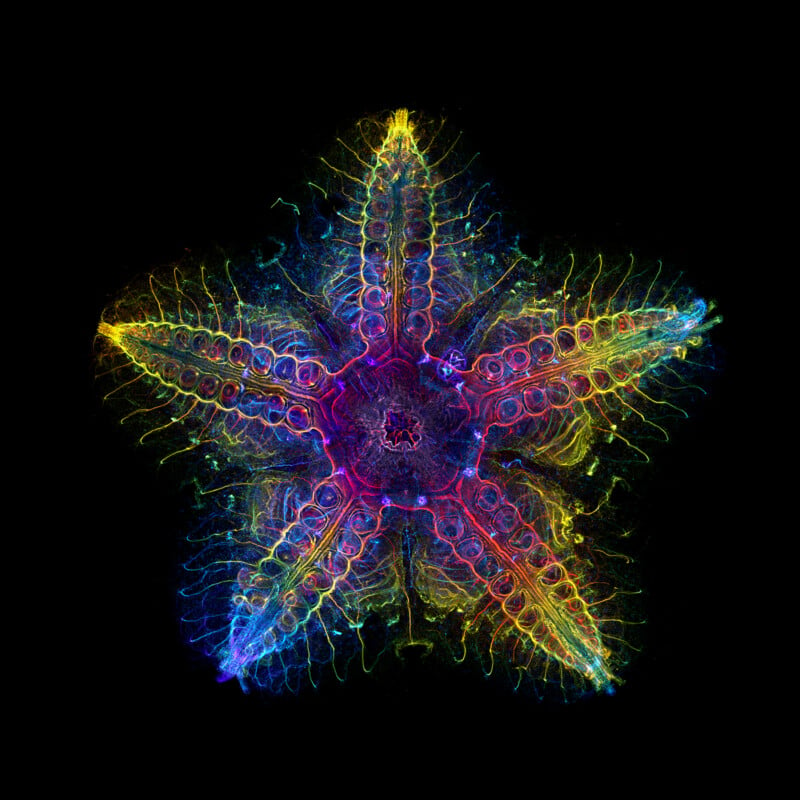
The Global Image of the Year Scientific Light Microscopy Award is an annual competition that recognizes the best in scientific imaging worldwide, and a fabulous photo of the nervous system of a sea star has taken home the top prize.
The Global Image of the Year Life Science Light Microscopy Award is presented by Evident and Olympus and began in 2017 as the Image of the Year European Life Science Light Microscopy Award with the aim to celebrate both the artistic and scientific value of microscopy images.
The competition serves to encourage people around the world to look at scientific images in a new way, appreciate their beauty, and share images with others. This year’s winners were selected from 640 images submitted from 38 countries.
The photo above, which was selected as the global winner, was captured by Laurent Formery and showcases the nervous system of a juvenile sea star (Patiria miniata). The starfish is incredibly small — only about one centimeter across — and was labeled with an antibody against acetylated tubulin after optical clearing and captured using a color-coded Z-projection.
“This is a fantastic feeling,” Formery says of his win. “Two years ago, I won an honorable mention from IOTY. Winning the global award feels like an incredible achievement and shows I made progress. I love microscopy and can spend a huge amount of time in front of our confocal microscope, but the very nice samples that I am lucky to work with really make the difference. I work with marine invertebrates, in particular echinoderms (sea stars, sea urchins and their kind). They are beautiful animals, with a fascinating and aesthetically pleasing fivefold symmetry that is unlike anything else in the animal kingdom. We know little about how these animals shape their fivefold body, which is the topic of my research. Echinoderms, and marine invertebrates in general, are often not well-known animals. I’m happy that taking images of them helps communicate how much beauty we have in our oceans, and why it is important to know more about them and protect them.”
Formery will receive an Olympus SZX7 stereo microscope with a DP23 digital camera — a combination that can easily cost more than $5,000 — for his winning photo
Shyam Rathod from India was selected as the winner of the new dedicated category for materials science and engineering images for his capture of a crystal of topical medicine for wart treatment named ABE, which is available in Poland. The image can be seen below, and for the win Rathod will receive an Olympus SZ61 stereo microscope.
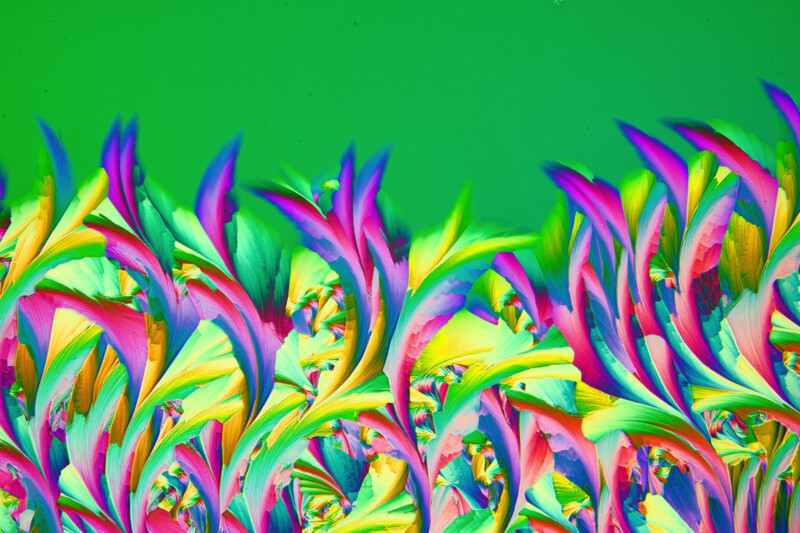
Three regional prizes were awarded to Javier Ruperez (Spain) for EMEA, Igor Siwanowicz (USA) for the Americas and Jiao Li (China) for Asia-Pacific. Each regional winner gets their choice of an Olympus CX23 upright microscope or SZ61 stereo microscope.
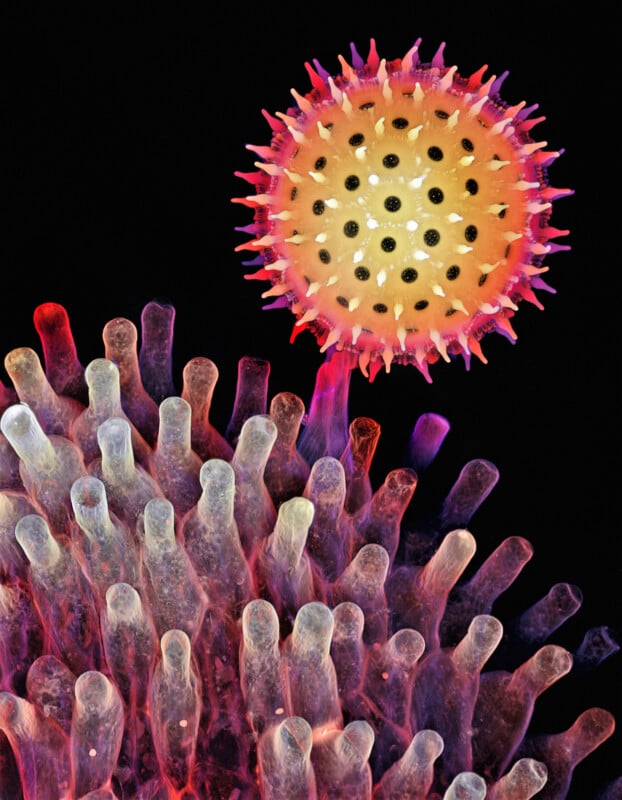
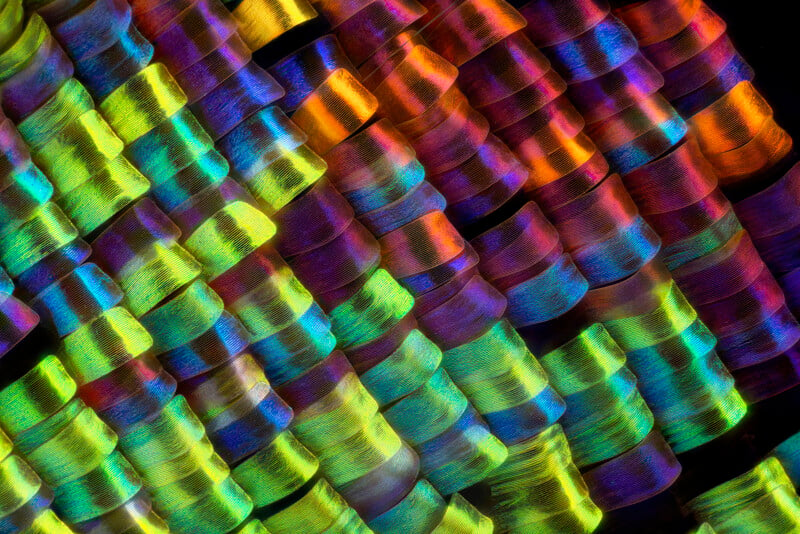
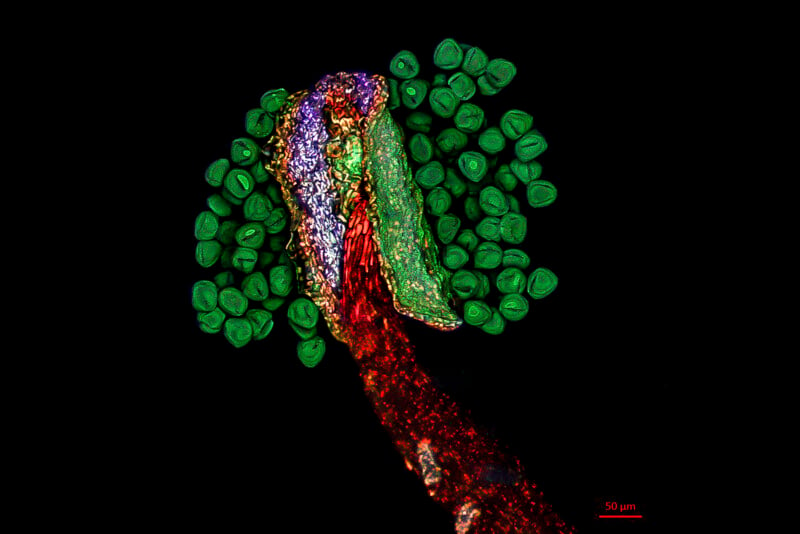
To see all the winning images as well as honorable mentions, make sure to visit the Evident Image of the Year Award website.
Update: The original materials sent to PetaPixel incorrectly identified Urania rhipheus as a butterfly when it is indeed a moth. That issue has been corrected both in the story above and on the competition website.
Image credits: All photos are individually credited and provided courtesy of the Evident Image of the Year Award.